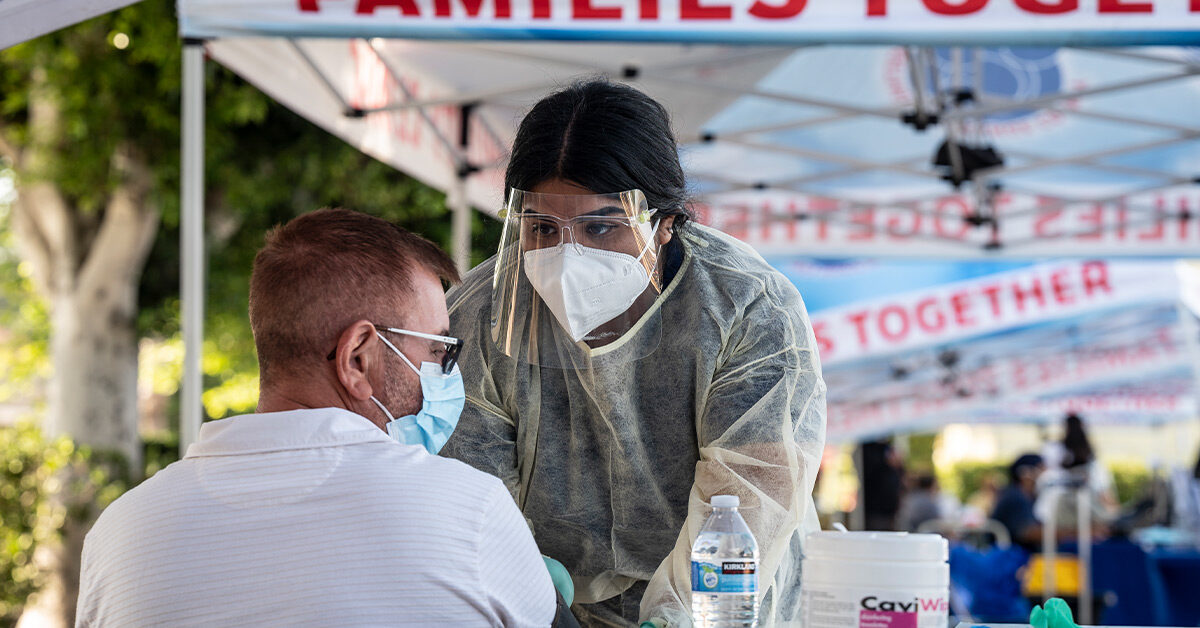- August 23, 2022
- No Comment
- 10 minutes read
Researchers say Monkeypox May Be Asymptomatic for Some People – Healthline

When the Biden administration declared monkeypox (MPV) a public health emergency (PHE) on August 4, it was believed that only symptomatic individuals were contagious.
However, a recent study published this month in the Annals of Internal Medicine finds this may not be true. Researchers discovered that some people who tested positive for MPV were asymptomatic.
Researchers at Bichat-Claude Bernard Hospital in Paris conducted MPV tests on anorectal swabs collected as part of routine sexually transmitted infection (STI) screenings for men who have sex with men (MSM) that have multiple sexual partners, and use HIV pre-exposure prophylaxis (PrEP).
Of 200 asymptomatic people who received screening, they found that 13 of them were positive for MPV, with two of those later becoming symptomatic.
According to the study authors, it’s unknown whether “viral shedding” by those with asymptomatic infection can lead to transmission.
“If so, the practice of ring post-exposure vaccination around symptomatic persons with probable or confirmed MPXV infection may not be sufficient to contain spread,” they wrote.
According to Dr. Charles Bailey, medical director for infection prevention at Providence St. Joseph Hospital and Providence Mission Hospital in Orange County, California, when someone is infected with a virus, it makes many copies of itself.
“Viral shedding is how those copies leave our bodies to infect other people,” he said. “The way a virus sheds determines how it spreads from person-to-person.”
“Any virus that can spread by asymptomatic people is harder to contain,” Dr. Rachel Bruce, interim chair of emergency medicine at Long Island Jewish Forest Hills in Queens, New York, told Healthline.
“Because the people spreading it don’t know that they’re infected and don’t change their behavior,” she explained, adding that it’s too soon to draw any conclusions from the study findings.
Asked if brief contact with an infected person is enough to transmit the virus, Dr. Carl Fichtenbaum, clinical professor in the Division of Infectious Diseases at the University of Cincinnati College of Medicine said the precise amount of contact time needed to cause infection is unknown with MPV.
“Usually it’s a combination of time and amount of virus,” he said. “Typically, 30 seconds is not enough time but for some viruses, two to three minutes is all you need.”
Fichtenbaum emphasized that “most of the time,” contact is needed for at least 10 to 15 minutes to represent a threat.
“But if I touch a doorknob full of virus for 15 seconds and then wipe my nose, that might be enough time with sufficient virus to infect me,” he said.
A new research letter from the Centers for Disease Control and Prevention (CDC) finds MPV isn’t just transmitted during sexual contact, it can be spread through close contact that is not sexual or intimate.
Researchers described an MPV case detected in someone returning from the UK to the United States who reported no recent sexual contact.
“His primary risk factor was close, nonsexual contact with numerous unknown persons at a crowded outdoor event,” the CDC wrote.
“Monkeypox is not an STI,” said Bruce. “While it can be spread through sex, it can also be spread by close, non-sexual contact.”
“So far, one person has been identified who may have caught monkeypox during one of four large gatherings they attended where there was close physical contact, including close dancing,” she continued.
Bruce said since this was one person out of hundreds of people at those gatherings, it doesn’t add anything to what we already know about how MPV spreads.
“Unless more cases like this emerge, I wouldn’t give away my concert tickets,” she added.
Donald Alcendor, PhD, associate professor in the Department of Microbiology, Immunology, and Physiology at Meharry Medical College said this isn’t surprising.
“Because the orthopox viruses [including monkeypox] are very efficient in transmission if they are deposited on the skin where micro abrasion exists, and this does not require sexual contact,” he explained.
According to Alcendor, known routes of exposure which could spread infection include:
He added that contact with fluid or scabs from monkeypox lesions on clothing, bedding or towels, and contact with respiratory secretions from sneezing, coughing, or a contaminated surface might also lead to infection.
A new study finds some people can be infected with monkeypox virus, yet show no symptoms.
Researchers say it’s still unknown whether asymptomatic people can transmit the virus to others.
Experts say if the virus is found to spread this way, it means the disease will be significantly harder to contain.
OUR BRANDS

